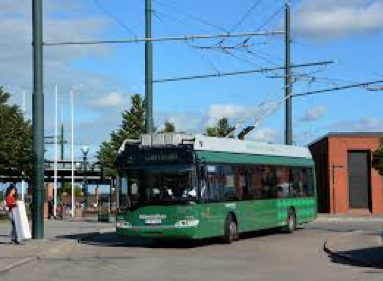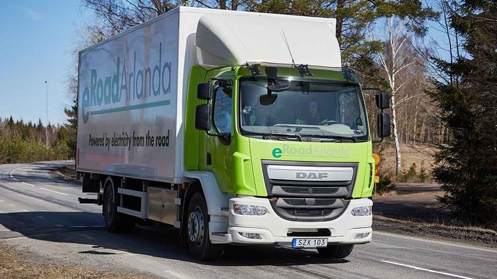What is Electric Road Systems?
Electric Roads, or Electric Road Systems, is a rapidly growing technology area that allows charging of moving electric vehicles.
All vehicles needs some kind of energy supply in order to be able to drive. Conventional cars are fueled by, for example, gasoline or diesel, and electric cars are usually charged with electricity from charging stations.
Difference in the ability to store energy
The most important difference when comparing electric cars with, for example gasoline powered cars, is the energy storage. The car batteries can only store a fraction of the energy compared with a normal fuel tank , which makes it challenging to drive longer distances.
For example, if we compare the mileage, the gasoline-powered car has a fuel tank that holds 40-70 liters which makes it possible to drive up to about 1000 kilometers. One recharge for the electric car usually lasts a few hundred kilometers– a significantly shorter distance.
If the electric car is to be able to drive 1000 km, and thus achieve the same mileage or range as the gasoline-powered car, it would need a battery that weighs at least 1000 kilograms. It is not possible in a passenger car as it becomes too heavy to drive and too expensive to buy. For larger vehicles such as buses and trucks, the numbers are even higher – a city bus, for example, needs 8,000 kilograms of battery to run 1000 kilometers.


The definition of Electric Road System is a system enabling power transfer from the road to the vehicle while the vehicle is in motion.
An Electric Road timeline
The first cars were actually powered by an electric motor. However, because of the inefficient batteries one hundred years ago electric cars disappeared in the early 1900s.
Electric powered buses and eventually trains could continue to run on electricity, drawing power through direct contact with the electricity grid while moving. Trolleybuses are a good example and they are still found in many cities all over the world. The trolleybus is connected to overhead lines and that way the bus is powered with electricity during the journey, eliminating the need to stop to recharge.


In the end of the 20th century, several companies began to look for alternatives to overhead lines as they were considered less aesthetic in urban environments and so the ground level power supply in the form of electrified rails that we see today emerged. There are several different types of electric roads that can be used both in cities and on country roads.
Read more about Electric road system concepts
